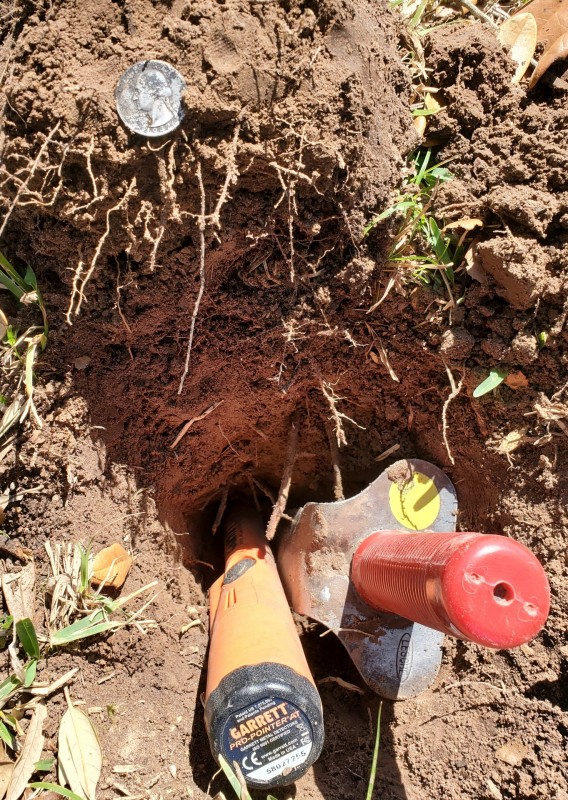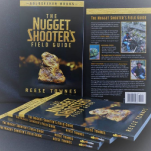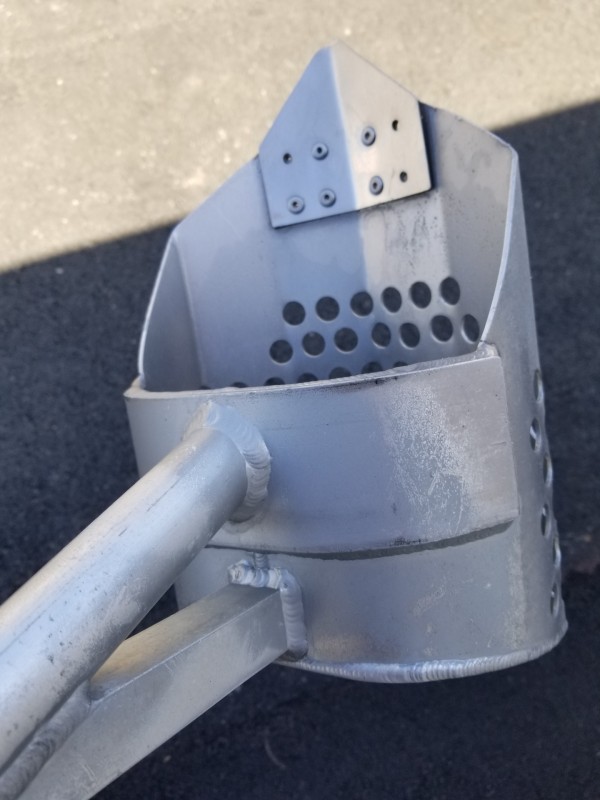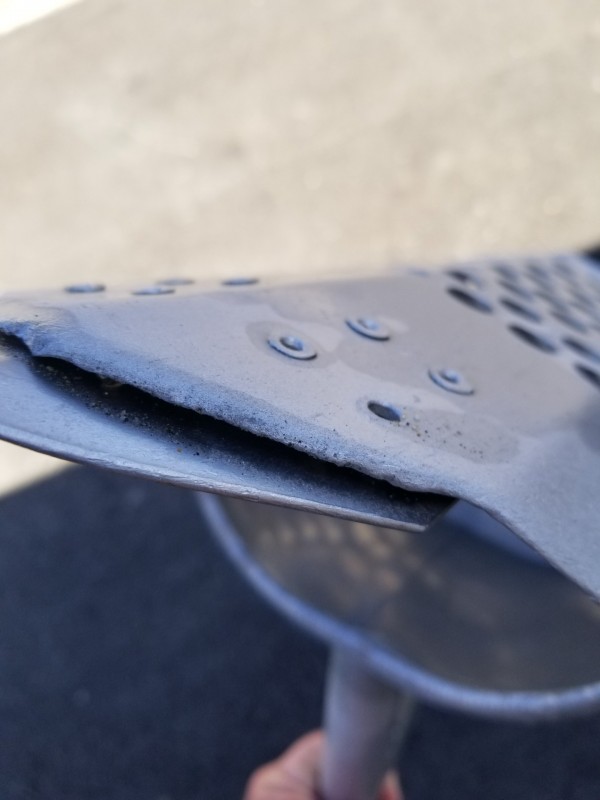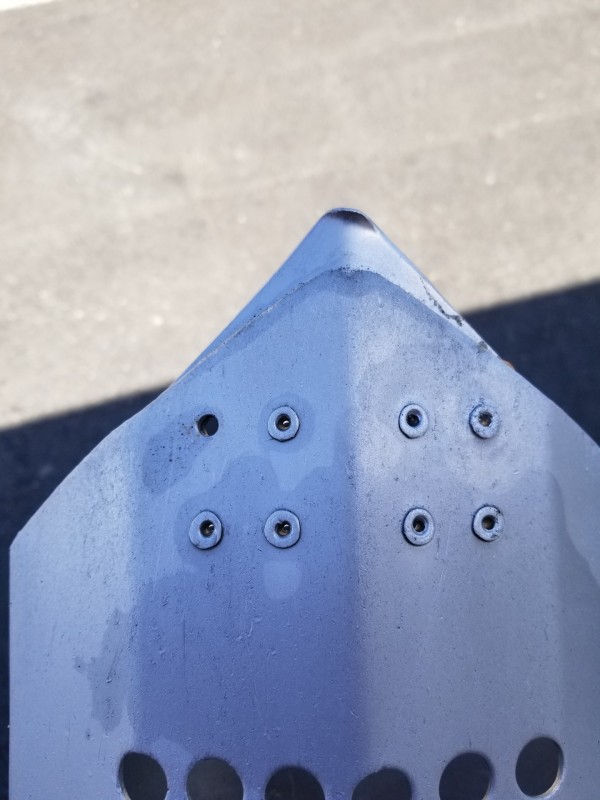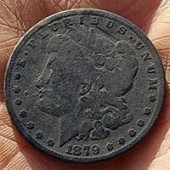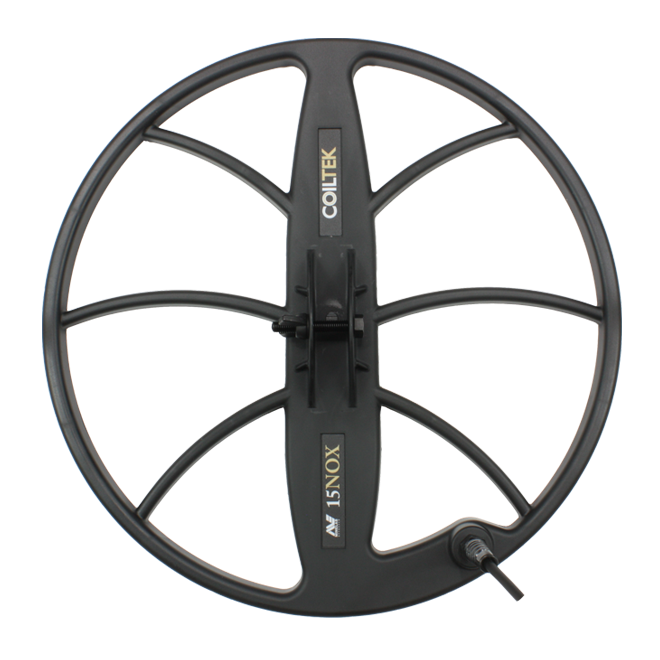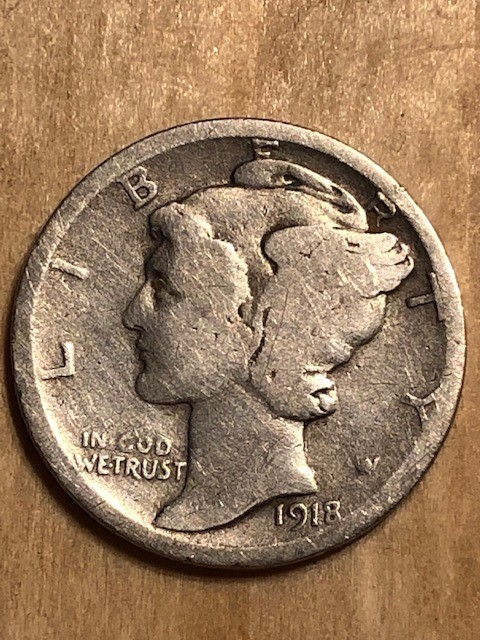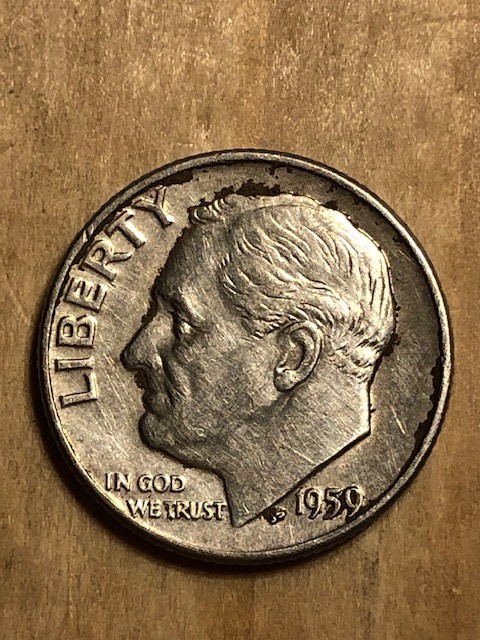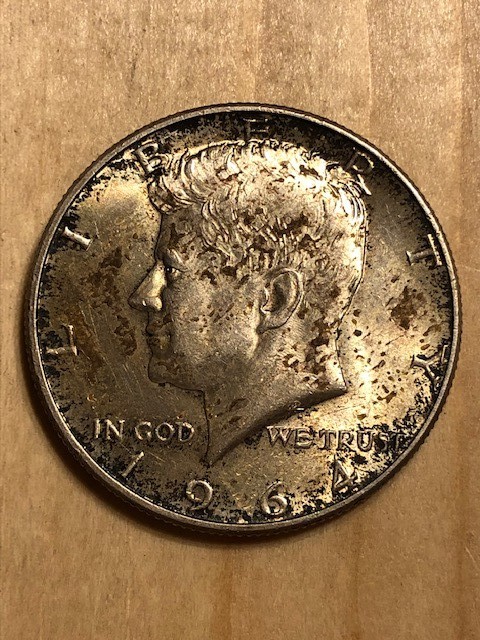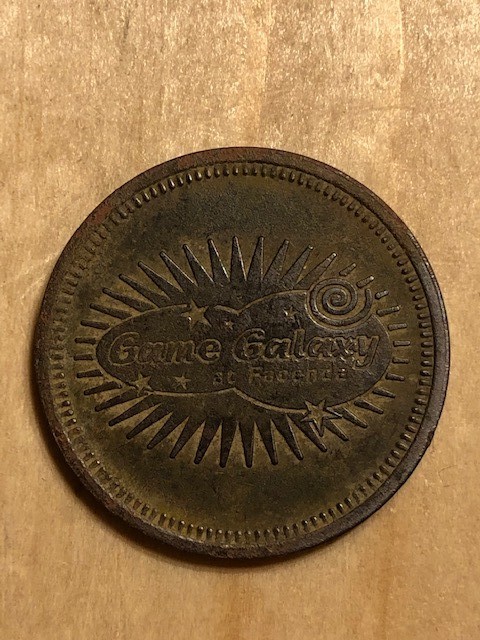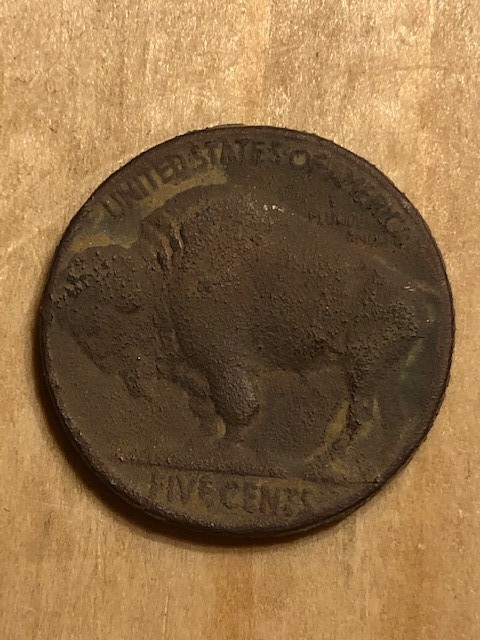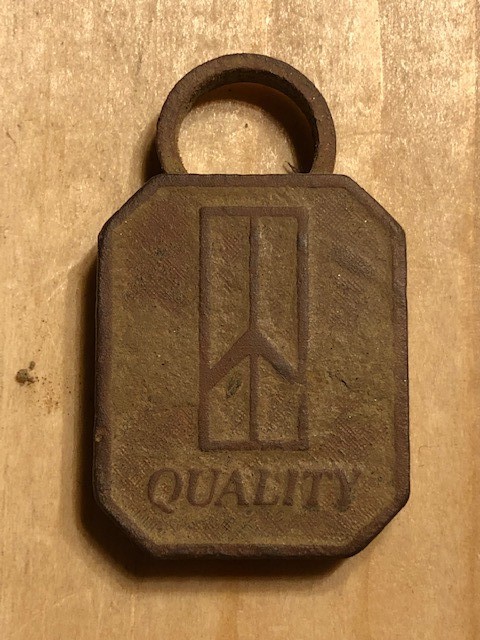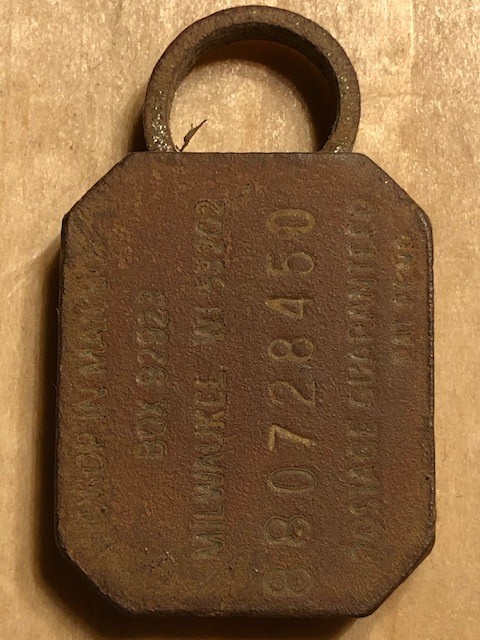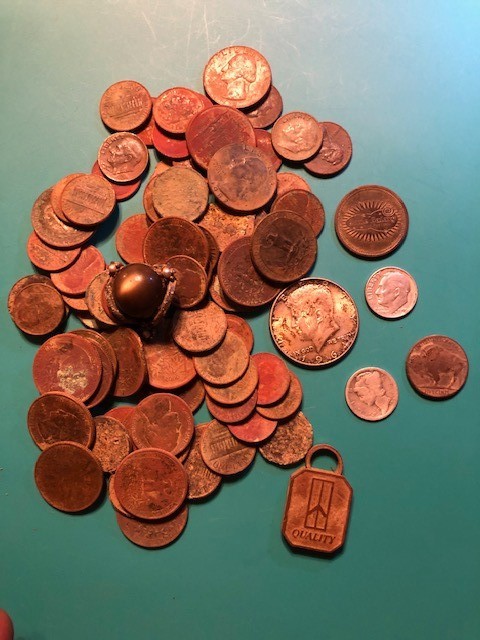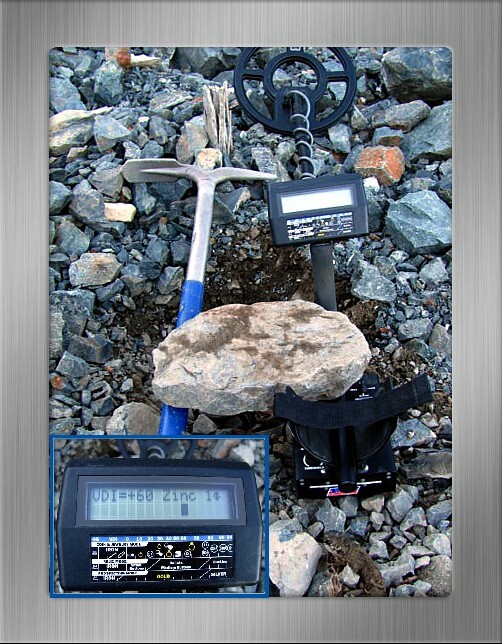Leaderboard
Popular Content
Showing content with the highest reputation on 03/08/2021 in all areas
-
We took two trips back to the gold rush camp area. I have identified 6 structures at the site so far. My neck is burned and my family is tired but everybody seems to enjoy themselves. No coins on the last two trips but some cool stuff has been pulled out. Powder flasks give a hell of a tone on the Equinox! Speaking of the Nox, it can find small stuff as in tiny buttons and pieces of lead. So here are the pics. My wife dug the Bowie knife and it may be my favorite find. The trident looking thing is a mystery and it was dug by my sons friend with a Whites XLT I gifted him. Cool find. Dug a square buckle with a star if anybody has info on it I would appreciate it. A blurry pic of a child’s ring with a diamond imprint.11 points
-
Finished up the farmhouse site today, made a few more passes and found nothing. I went to a new site that I previously plotted using old maps where a building was up to the 60s, and first known in 1917 on a USGS map. Hacked around a bit and found the objects in the photo. I'm not sure if I should grid this spot, I didn't hear a lot of iron. Great way to kill an afternoon. At least this field was out of the annoying March wind. The disc is lead, could be a bale seal, or possibly a weight or game piece. 1 1/4 inches in diameter. It was weird to find a sinker in a farm field about a mile from the river, but there it was. Some kind of point, it is brass or bronze. It is fashioned to be aerodynamic at any rate, but could be a finial. Large heavy buckle, most likely work animal tack. I think the wheat penny is a 1909, but not an S or VDB, it is so corroded it doesn't matter. 😀 Best find of the day, the brass plate. It's 2 1/2" by 2, has a naked woman on each side, and a man and an animal in the center embraced by the arms of the face on top. Better detail in the bottom photo. Image search returned nothing, but I may have this very object in one of my artifact books. Don't know whether it was a buckle, mounted on furniture (it has a flange on the back but no holes or guides), or some sort of breastplate. Not much time left before spring planting.5 points
-
I have a pack canoe, 35 lbs, my sea hunter weighs 14% of that hahah. Nice little boat and plan to use it to access areas between priv properties along the puddles here. Just need the motivation...3 points
-
I have taken your message into consideration, I will answer it a little later with a new subject3 points
-
All my childhood neighbors would find lead weights in their yards if they detected..... casting practice.. haha.3 points
-
3 points
-
If you look at the picture of the pieces, the ring on the original clamp is what you need to remove for it all to come off easily. This is Carolina's picture since he got his off with little damage and I mangled mine a bit. Looking at the clamp from the top, there is a very little seem between the top ring and the cone shaped piece. From the side, there are retaining pieces that fit into slots along the upper part of the cone. I tried unsuccessfully to push the retaining parts in to release the cone. I ended up using a very small flat blade screw driver to get between the top ring and the cone and pry it out. Once the ring released from the cone, it pretty much all slid apart.3 points
-
The overload symbol is not about the normal receive sensitivity, which is what the sensitivity control sets. It is about the built in transmit power being reduced to deal with adverse conditions. The Equinox senses when there is too much signal blowback from saltwater or black sand or both. When a detectors "sees" too much salt or too much black sand (or both) it will go totally blind unless the transmit signal is reduced. Going into overload is not reducing depth - it is giving you depth when the machine would otherwise be non-functional. The overload will not go away until the conditions creating it go away. The only time I have seen the overload signal is when crossing areas on a beach obviously loaded with magnetite. The overload symbol comes on and the detector keeps running fine, then the symbol goes away once past the magnetite patch. I do not know what intensity of mineralization it takes to trigger the process, but it is quite a lot. Difficult Areas – Black SandSome beaches contain black sand, which has high natural iron content and is often magnetic. This causes continuous false ferrous detections, making normal beach detecting impossible. Beach Mode automatically senses black sand and reduces the transmit power to ensure that targets can still be detected without overloading occurring. When black sand is sensed, the Beach Overload Indicator will appear on the LCD. When this icon disappears, full transmit power automatically resumes.3 points
-
Stumbled onto this interesting article form another site...... Not sure where to post this but Steve can relocate it where he see's fit? https://www.westcoastplacer.com/paleochannel-hunting-guide/2 points
-
Never hunted the Tar in mud before so I was a little off balance at the start. Oh, the machine was ok but I was switching from handling pull tabs & rusty bottle caps to can slaw and such. I was getting sucked in early on digging more trash than I should've. About a half hour of that I got back into the game , found out where the nickels are, by moving slower threw the junk. I hunted in all metal ,disc -2. Wasn't long ,was getting fairly decent at calling the targets before digging. I dug maybe 5 or 6 coins around seven inches. So a junk ring, couple of MatchBook cars, 59 coins , nine nickels for around $6.29 . I'm not the slickest guy swinging a coil, and this site had the goods and there's plenty left. Today ended up a dunk shot and sure was fun.2 points
-
Sand is just that - sand. So a rock and the minerals in it are not part of a discussion regarding "black sands." Rather, you have a rock that appears to have some dark colored mineral, presumably an ore of iron. Sand that is black is not always "black sand," and just because you have "black sands" does not mean you will find gold. Iron ores are common and just like quartz, can be found in far more locations that lack gold, than those that have it. Anyway, here is something I wrote for another thread that explains what "black sands" are... People sometimes misread the term “black sand”. Black sand is a mining term and actually has more to do with weight than color. Black sands are the heavy mineral concentrate recovered when running any form of placer mining concentration system. The most basic version is the heavy mineral concentrate left in the bottom of a gold pan. From the Glossary of Placer Terms in Placer Examination Principles And Practice: BLACK SAND Heavy grains of various minerals which have a dark color, and are usually found accompanying gold in alluvial deposits. (Fay) The heavy minerals may consist largely of magnetite, ilmenite and hematite associated with other minerals such as garnet, rutile, zircon, chromite, amphiboles, and pyroxenes. In Western gold placers, the black sand content is commonly between 5 and 20 pounds per cubic yard of bank-run gravel. Black sands are also concentrated by winnowing action on beaches derived from terrestrial sources like volcanoes or granitic intrusives... any source that can supply the requisite heavy minerals. In this context simply looking at a beach or in a stream and seeing dark or black colored material is not finding black sand. Amateur gold prospectors often do this, thinking that seeing black colored material in a stream is a positive sign for gold. All they are often seeing is just material like black slate or shale gravels and sands, not actual black sand. Unless it is heavy material concentrated by gravity action and typically with a high magnetic component, it’s not black sand in the context of the discussion. True black sands are usually very fine though I have encountered coarse grain black sands. The fine grain variety often has a glittering appearance due to the presence of many sharp edged crystals of the constituent materials, chiefly magnetite. Sands concentrated by gravity action and containing a high enough portion of heavy garnet material which confers a reddish color are referred to as “ruby sands.” Again, the key thing is material derived by gravity concentration and therefore very heavy, not simply color. Here is a picture of some gold I recovered in a Garrett 10" gold pan along with the resulting heavy magnetic black sand concentrates. Click picture for larger view. Placer gold and black sand concentrates2 points
-
I had a 30' motor yacht, caught huge Striped Bass, Spanish Mackerel, Atlantic Bass, Spot, Flounder and the occasional ray. Used to Kayak fish on the other river. Got a tributary right out back. My first boat was a 25 foot ProLine my wife and I restored from the ground up. Love clam chowder, but only know the East Coast kind. The Potomac is kinda unforgiving, and the Chesapeake Bay is downright nasty. Boats are expensive and tedious to maintain. I might get a small boat in the future for river hunting. I see what you mean about cutting into metal detecting! 😀2 points
-
Had to give up fishing except for special occasions... it was cutting into my detecting time. haha. But when I lived in the Pacific NW, I wouldn't miss razor clam season on the Oregon Coast... Limit out... then go detecting. Big pot of razor clam chowder for dinner 🙂2 points
-
The overload indicator - / work on the reduced Tx .... / on Equinox turns on until the magnetite concentration reaches a certain level - from my observations it is somewhere from the limit of 20-30% of the Magnetite concentration in Black Sand - when using multifrequency..and 11" standart Coil... The mere reduction of the detector's sensitivity does not affect .. the change of the detector's resistance to such a phenomenon .. A small 6 "coil will be less resistant to higher levels of Magnetite Concentration in Black Sand than an 11" standard coil. ---------------------------------------------------------------------------------- BlackSand Test boxes with 4.4% .., 12%, .. and 33% Magnetite concentration ..2 points
-
The information made available by the contributors to this thread is invaluable. The same can be said for the Ancient River Channels thread above. Thanks to everyone involved.2 points
-
Nowhere in the Anfibio or Impact owners manual does it recommend a factory reset when changing coils. The Garrett manuals all do as far as I know. That is one of the few things I find inconvenient on the AT Max. I'm glad it is not required on the Anfibio with factory coils as all my Mode are customized to some extent. Good to know Non Factory aftermarket coils may need a reset.2 points
-
Have you used their repair facility? Always had good work done by them. Just a thought. GaryC/Oregon Coast2 points
-
2 points
-
I have a question regarding how the Equinox throttles back sensitivity when it encounters black sand. If I am running at 17 sensitivity on a salt water beach and detect over black sand; the machine throttles back sensitivity. By how much does it do this? What would be the sensitivity when the black sand indicator is active at 17? This leads me to wonder. If running at 25 sensitivity and the machine encounters black sand, is it going to be a higher number than the previous scenario? I also realize, that at 25 the machine will probably throttle back sensitivity much sooner than at 17... Just curious, thanks!1 point
-
I made it out for a three hr. hunt yesterday and dug a dozen or so nonferrous targets in heavy iron. Still getting the minelab 800 tuned in a bit at a time. Most targets were lead casting spill. I got this 1851 seated dime and a decorative one piece button with the shank. Notice rusty deposits on the silver! I had hunted this site with My whites dfx and could not hunt this portion of it at all due to the extent of the iron trash. Thanks for looking1 point
-
Got out this weekend for about 4 hours with the Equinox 800 and 11" coil. The outing started out a little slow and after 3 hours I was getting a little discouraged. I had dug a few small musket balls, a dropped Sharps bullet and a crushed cuff button. So decided to head over to where my 2 buddies were digging. As I changed directions and worked toward them, I got a jumpy 15-16 on the Equinox and was rewarded with not 1 but 2 J hooks in the same hole. The area I worked between where I was and where my buddies were hunting was loaded with iron and progress was slow in getting there. When I got about 50 yards from my one friend I got a 19-20 signal and dug a zinc penny about 2 inches down. I thought great what's that doing here. Not 5 feet from the zinc penny I got an identical 19-20 signal only deeper. My first thought was another zinc penny. But at about 6 inches down in the bottom of the plug was a nice 1857-O half dime. That made my day! I walked over to show my closest friend and asked how long he was planning to stay as it was his permission. He told me he actually needed to get started back toward the truck now. We were about half way back to the trucks when I got a 18-20 signal one way but negative numbers the other. This kind of signal usually turns out to be iron but I decided that this might be my last decent signal and dug it anyway. I was down about pin pointer depth and the item was still in the hole, I loosened the dirt and took one last handful out of the bottom and through it on my pile next to the hole. In the pile I could see the edge of a large coin, so I called to my friend and said I think I have another coin. He came over and his first words were wow it's old. I said looks like a quarter and he said no it looks like a 2 real. I picked the coin up and to my surprise it was an 1781 2 real. Two great old coins in one hunt, still can't believe my luck. There's still stuff to be found out there.1 point
-
Sounds like more work than it's worth. New England is pretty forgiving if you can find any public land but we do have one town that doesn't allow any metal detecting yet the coin shop sells Garrett machines. Not sure how well that works for sales LOL.1 point
-
This is consistent with an on-edge silver quarter I found last summer (and think I had been over previously). I failed to check with Gold Mode but found it while searching in Park 1, Recovery Speed = 4 and barely got a (non-diggable) peep investigating with Field 2, RS = 7. Mine didn't pinpoint properly (probably 4 inches off), I think because it was on edge. Mine wasn't as deep as yours, either -- somewhere in the 6"-7" level. What was your Recovery Speed in Gold mode? And were you in multi-frequency (not 20 kHz or 40 kHz single freq)? BTW, I'm headed out shortly following Jeff's advice to hunt in Gold 1 at a previously hard hit spot. I hope I do half as well as you did. (I think I'll use the 6" coil. Quite a bit of construction/demolition trash there since it's in the side yard of a homesite that had the house razed a couple years ago.)1 point
-
Yes, it makes no sense to wait for news that does not arrive, the presentation, the launch to the market, delays, several more years may pass. We must continue to stimulate the economy, there is no other option.1 point
-
1 point
-
Certainly done somea that. Used to fish the Potomac a lot, now I just surf cast at the beach.1 point
-
That is very cool! Love that lock F350P. I have found a couple of Yale locks.. never one of these. It is a beauty! ~Tim1 point
-
Honestly, I thought the silver coin from this location would be my last to check off the list... this place has definitely been cherry picked over and over through the years before I happened onto it. But I have a nice collection of pull tabs and ring pulls already... so the nickels and IHP are in there... just have to get down to them.1 point
-
Great find on the information, Hope you find a place for it if you decide to clean it up.1 point
-
1 point
-
Damn I look forward to you new posts!!! I used to have permission to hunt an 1850's and prior era site but didn't care about relics only gold nuggets. It was right in the middle of the gold rush area of California. Now, I wish I would have focused on the old stone homestead houses more! There were a bunch of them and there were a couple nobody knew were even there.1 point
-
1 point
-
1 point
-
1 point
-
With Gold mode, it's best to not look at the screen at all and just hunt by tone because the numbers can be way off, especially around iron.1 point
-
I don't know about where you are, but here the answer is yes. That is because here in California even unpatented claims have to have tax paid on them because they are considered private property. But once again, this is through the county assessors office.1 point
-
1 point
-
1 point
-
@Clay Digginsand @jasong and others who helped here - just want to thank you for the free time and education you are providing us, I really appreciate your responses, and am sure a lot of us here are benefiting by this - thanks!1 point
-
The first thing to understand is that neither the MLRS nor any of the online claims mapping sites show actual areas under claim. On the Land Matters website we make that clear right on the front of the mining claims maps page. The mining claims represented on these maps are only displayed to the nearest section and DO NOT display the actual claim location. Sections are about one square mile and actual mining claim locations can vary considerably from their mapped location. The only way to determine an actual claim location is to obtain the County Recorder Location Notice and amendments for the claim in question, study the mapped location and then find the location marker on the ground. Members of the public and other prospectors do not have the right to determine whether an existing claim location is valid, only a court of record can make that determination. The next thing to understand is the BLM, Land Matters, Diggings and even the pay services do not rely on mining claim locations to present their information. The information is derived from BLM case files which are not based on current claims information. Besides the normal 90 day + lag in location files and records the BLM itself is years behind on updating these case files in several states. Just last week we ran some rough numbers on what percentage of BLM mining claim case files have never been adjudicated by the BLM beyond acknowledging the receipt of a notice. Adjudication is the simple process the BLM uses to determine if your mining claim location is properly described and located on public lands open to mineral entry. Until a mining claim case is adjudicated the BLM doesn't even know whether there is an actual mining claim associated with the notice they received. Here are state by state those percentages of not yet processed mining claims in a simplified format. 4% - Arizona 53% - California 20% - Colorado 10% - Idaho 1% - Montana and South Dakota* 1% - New Mexico 6% - Nevada 3% - Oregon and Washington* 14% - Utah 9% - Wyoming * These States are administered as a single unit by the BLM. As you can see if you are looking at the MLRS in California the information you are viewing is more than likely years out of date and has a slim chance of being accurate. In fact California is at least 2 years behind on processing claims closures so the numbers you see here just the tip of the administrative backlog iceberg. To varying degrees a similar situation exists in all states. The BLM isn't shy about warning you of this situation. On every file you acquire from the BLM you will find this notice in all capital letters and bold type: NO WARRANTY IS MADE BY BLM FOR USE OF THE DATA FOR PURPOSES NOT INTENDED BY BLM The list above should give you an idea of what purposes the BLM intended. Most County Recorders will update their records within two weeks of receiving location notices or amendments. There are notable exceptions to that standard. In particular in California some of the larger counties are far behind due to being closed to the public for the last year or so. Nonetheless the County Recorder's office is an essential stop on the path to determine public lands open to prospecting. What you are up against here is learning a new set of research skills before you can determine where there is open ground for prospecting. This may seem complex, and it is. Despite what appears to be a modern mess of red tape the fact is that successful professional prospectors in the United States have had to master these skills for more than 150 years. It's actually a lot easier now than it was even 20 years ago. It's just one of the many complex skills prospectors must master to be successful. I do this for a living. I can tell you from experience that there are some basic steps that really need to be accomplished even before you look at the BLM files or the County Public Records. The very first thing you need to do before researching claims in any given area is to study the Master Title Plat (MTP) maintained by the BLM. The Master Title Plat is the definitive map of government interests, ownership and past actions on the public lands. It includes patents, mineral withdrawals and ROWS. It's one of the few government documents you will find that doesn't have the giant BLM disclaimer. You can rely on the MTP to be an official government record. Without viewing and understanding the MTP you will waste a good part of your research and prospecting time investigating lands that you have no right to prospect or claim. Thousands of mining claimants waste their time and money every year staking claims that are invalid and will be classified as CLOSED as soon as your state BLM gets around to adjudicating your location notice. The real message here is that you have a legal duty to determine the status of the land before you put boots on the ground to prospect or locate a mining claim. This is known as due diligence and it's a positive legal duty to avoid trespassing. Not just charges of trespassing against a mining claim but trespass on private property or mineral trespass against the United States is a distinct possibility too if you don't do the research before entering these lands.1 point
-
I don't mean to belabor the obvious, but unless the buyers are naive, the rake is the sum of both buyer's premium and seller's premium. For example, if an auction house charges both a 15% buyer's premium and a 15% seller's premium that is effectively the same as a 30% buyer's only premium or a 30% seller's only premium. Auction houses are more likely to negotiate on the premium if they really think the bidding will be competitive and also that the piece will bring a high price. IMO if your brother's offer of $20k is an indication of its value (maybe a lower limit), that piece might be of sufficient interest that they will negotiate. One other (maybe obvious) point: you absolutely want this auctioned by an auction house or site that has regular buyers of these rare gold pieces. In the extreme if there is only one buyer in the audience then s/he has all the leverage. (Again, I apologize if I'm stating the obvious.)1 point
-
With the amount of new people here the last few years it bears repeating on a fairly regular basis that the county recorder is the only place to properly determine what location paperwork has been filed if time is of any concern at all. All of these 3rd party websites like Minecache or yes even Mylandmatters (though they are far and away the best 3rd party site with the most knowledgeable people) are not substitutes for doing any kind of claim research, though many newer people tend to think it's suffices, that is not the case. Why? Multitude reasons. 3rd party sites are at best using the LR2000 (now MLRS) database dumps to update their own databases. This means that they might be up to 2 weeks behind the BLM themselves since it's a bi-weekly database dump. Assuming they update their own databses the day the dump occurs, which probably isn't the case so they might be even further behind. I get the "bi-weekly" database dump from the BLM myself, and I can promise it's often less bi-weekly and sometimes more "whenever we get around to it". I've seen it take 1+ months. The BLM themselves are delayed many months both in processing paperwork as well as data entry. Even in states in which historically they were fairly caught up, they are now behind 3+ months. I know because I file claims often and some of mine which I filed over 3 months ago are only now showing as "filed", which means they won't show up in BLM databases OR 3rd party databases unless you search by serial #, which only I have at the moment so they will not show up in database or mapping searching by my name, geographic location, claim name, or anything else. They do show up at the county recorder though In addition to the BLM delay, a claimaint is not required to file with the BLM for 90 days after location. A period of time I and many others very commonly use since being in the field means no mailboxes to get the county recorded original back quickly, nor access to post offices to send mail to the BLM once that document arrives. 3rd party sites do not give you any actual location information beyond the 1/4 section. That is insufficient to determine what land is actually claimed. So, right now, in states commonly prospected on this forum, I can absolutely guarantee that there are claims ~6 months old at this point (and maybe older) which have yet to even show up in MLRS, let alone any of the 3rd party websites. The 90 day period along with the BLM's internal delays in even processing paperwork received means that location certificates at the BLM may not show up for well over 3 months after staking/filing, so it's not good enough to only research at the BLM either. The county recorder is the only place to go for up to date mining claim status. Any serious prospector going beyond club claims has to familiarize themselves with recorder research. If not, stick to club claims because this is a huge part of prospecting, in addition to understanding the laws. The only exception is when researching federal/BLM specific documents which may or may not be required to file at the recorder, or curable items such as NOIH's, and these the BLM may be the only or at least the first agency to have copies.1 point
-
1 point
-
By standard do you mean the x35 coil? Just checking because the legacy LF coils can’t be operated above 18 kHz. Anyway, good luck and dig some keepers!1 point
-
What coil are you running? Picking the right frequency is probably the most important thing. If you understand what the settings do and how they affect performance, you really don’t need a custom program. Start with Deus fast, adjust recovery speed to 2 or 2.5, unless super trashy and thick iron then crank to 3, use the default disc or increase it as high as 10 (disc at this level DOES NOT affect depth despite internet rumors to the contrary and helps with preventing TID downaveraging and gives more accurate ferrous/non-ferrous indication on the horseshoe display), and your favorite tone setup (I like pitch tones with some iron volume for relic hunting, full tones for coin shooting in can slaw and pull tabs). Use 25-28 kHz as a good button, brass, lead, and gold mid-conductor relic frequency. Lower it if you need more depth on higher conductors like silver. HTH.1 point
-
Found a rare undetected park this weekend (I'm assuming). It was started in the late 20's. The first day,Saturday was 36 degrees and windy. My buddy with the nox 800, found around $5.00 in clad and a 37 merc. and a 1940 WL 1/2 dollar. I hit nothing but clad about $4.00. Sunday was way colder, but a way better day for finds. My buddy again hit up on 3 merc's and a small silver ring. I redeemed myself by finding a 1918 merc a 1959 rosevelt and a 1964 Kennedy 1/2. I also found a lone buffie, (my first one in years), game galaxy token, $3.50 in clad and what I believe to be an Oldsmobile key ring ? Not sure of the era on this, but it has a serial # on the back. Seems to be made from brass. Very cool find I think. We stopped digging penny's within the first hour, this place was filthy with them. I'm looking forward to some more good finds here soon, because we only hunted an acre out of about 30.1 point
-
Rich - Great to hear you had a good outing. Wish I could have made it this year. Looking forward to the next WTHO.1 point
-
Hi Gerry… thanks for a timely post highlighting White’s Metal Detectors, an American company that historically has set an innovative engineering standard by which all other metal detecting products have been compared. And for those eye-catching photos depicting a variety of extraordinary recoveries using a White’s MXT metal detector, they illustrate the ultimate in successful treasure hunting. I currently have a White’s MXT 300 and an assortment of coils used primarily for prospecting native silver ores and nuggets in northeastern Ontario. Aside from silver float searching in natural environs where bedrock is generally near the surface, we contend with an abundance of iron and other trash signals in the abandoned mine tailings. We also struggle with conductive pyrrhotite hotrocks, niccolite, and cobalt minerals that generate good positive signals from both VLF and PI units. Those conditions make the MXT’s 13.88 kHz operating frequency, target ID meter, discrimination modes, and particularly the motion all-metal prospecting mode featuring iron probability, VDI and ground phase readouts an excellent choice. The MXT and wide selection of coil types and sizes is ideally suited to this application, and especially so because the most desirable targets weigh ounces and more. Below is an excerpt from a recent article entitled Recreational Prospecting in the Silverfields of Northeastern Ontario. It describes a rewarding field experience a year-and-a-half ago utilizing the White’s MXT 300 equipped with a 12” diameter concentric searchcoil to successfully recover large native silver. A Tale of Two Target Signals Late one afternoon, an elongated signal, correctly indicated by the MXT’s iron probability readout, proved to be a sizable iron bar that was removed from several inches below the surface. Rechecking the immediate area produced another signal that was slightly offset to one side and perhaps a foot deeper. It consistently read at 20% iron probability, and resulted in the large silver sample you see below. It was a special moment to find it so close to the surface, and to realize that the encouraging audio signal and target ID had been produced by silver. If the iron bar hadn't first been removed, that silver signal would have been entirely masked by it regardless of coil size or type. The overlying shallow iron bar had produced a completely dominant, blaring signal. The specimen below was HCl acid treated to remove excessive carbonate rock. It was cleaned with a rotary tool silicon carbide bit, followed by a soapy wash and rinse to produce the silver specimen depicted in the photo below. While not exactly a handsome sample because the silver is embedded in a dark blue-grey carbonate rock, it is a fine example of massively structured dendritic native silver that accounts for most of the sample’s total weight.................... Jim.1 point
-
Going back more than a few years a friend showed me that the MXT could see things that my 2 new machines couldn't, And in a frosty mood I got on the computer and I found some of Steve's early success stories, not knowing too much about him apart from he had driven just about every detector that had come out and the fact that it even surprized him how good it was back then, This was a Sunday night, with the Major all brand detector importers 7 or 8 miles away I had a new MXT 300 in my hand by 10:30am Monday morning. I phoned the friend who showed me what it could do and he told me how to set it up and off I went, In the excitement I went off without food and water 14 hours later I came home feeling almost broken, hungry, thirsty, and worn out from digging the toughest ground I have ever dug til this day, something was wrong, I dug good sounds that came out as bad and nothing worked, After a week of hibernating I thought I'd give it another shot only this time I took test pieces to set it up. I got to a spot 800yds from the first place using the test bits to set up the machine and walked up the 4/5 foot bank on to the little plateau and the first sweep of the coil I got 3 medium volume signals about 4 feet apart, I dug the first one that was reading 55 on the VDI and it was a huge Mens 18ct Gold Ring, wiping off some of the dirt I said please be REAL, out with the eye glass "Oh Lordy" It was, I sat down and had a Coffee and laughed and I almost was ready to go home right then, Then I thought I better dig the other signals, the second one 14" from where the Ring came out, and a few inches 4/5 down out popped a huge Pocket Watch T-Bar from a watch fob, out with the eye glass revealed that I had another 3rd of an Ounce of 18ct Gold, sitting on my Knees I thought my mate "his name is Steve too" Is never going to believe this, even more so when you consider this place had been used as a test site for the past 40 years and had been used for 100's of detector rallies and had once fallen victim to a full on archaeological Dig not 100yds from where I was standing, Now I am more than ready to call it a day, then I remembered the third signal that was almost at the end of the sweep 4 feet from the first target I had another Coffee, gulped it down and started digging 5" out came a fine woman's Gold ring again in perfect shape, the eye glass confirmed that it was also 18ct, now I am shaking my head still saying "Steve is never going to believe this" Not wanting to damage it I wrapped it up in tissue and put it in a safe place, Now the day was more than perfect, 3 lots of Gold in your first sweep of the coil with a new machine on the first day ? that can't be right ?, The following weeks had me searching 7 days a week 10-14 hours a day and in a place that people said was dead / useless forgetting about the Gold, I found more ancient coins and relics in a day than anyone had found in 5 years prior and In a week I was finding the stuff I had only seen in magazines and only dreamt of, In a place that had seen every French, American and Australian detector made for the last 30/40 years from a time when brand snobbery had not been invented, When people ask what machine you use they quickly dismiss the subject when you tell them an MXT with a deflated "Oh". and I wonder Is there a best machine out there ? I don't know for sure, but from what I have seen with the MXT you can't reinvent the Wheel, that has been around for over 6/7,000 years, It's not a gadget or a gizmo, It's a Tool that is solely about detecting, How do you judge something like that, that has done all of the above ? and why I spent so many years testing it in some of the worst places on earth, The only way I can judge it is by calling it a Tool because it just gets to work and gets it done. Is it the best detector ever made ? I can't answer that but it is the best Tool ever made.1 point
-
Good Lord Gerry you did alright, I have to agree with you there, First thing I always do is update my MXT after I got that one secure then I buy the rest at my leisure, Like all machines they all have their quirks but it just so happens that the MXT's quirks work In the right way, And your right about the coils, I have from the little 4x6 and the 5.3 which is the hottest coil for the MXT right up to the 15" MAX coil, My favourite DD is the Detech 14x10 it has a couple of inches more depth over the 10"DD possibly even the 12" concentric but it can handle the hotter ground better than the concentric, The MXT has become a Legend in it's own life time, Two must have detectors for prospecting is the MXT and the GPX but I would also have to add the SDC, I would sell any detector but not the MXT unless I was buying another one and trading it in for the new one, I think it's just that it works no excuses needed no silly menu's to get wrong, just turn it on beep and dig, plus there are about 40 or 50 coils out there made for it, Love the Balance of that 14x10 on there, it just Glides over the ground, Heaven, "Oh Yeah". John. PS, Gerry I gotta ask, but how deep were those nuggets ? Awesome pics, any stories to go with those pictures thanks for posting.1 point

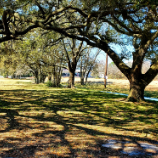
.thumb.jpg.8761b3d9b3da119b9e6d1912f67275ad.jpg)
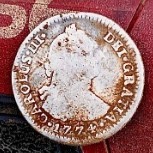
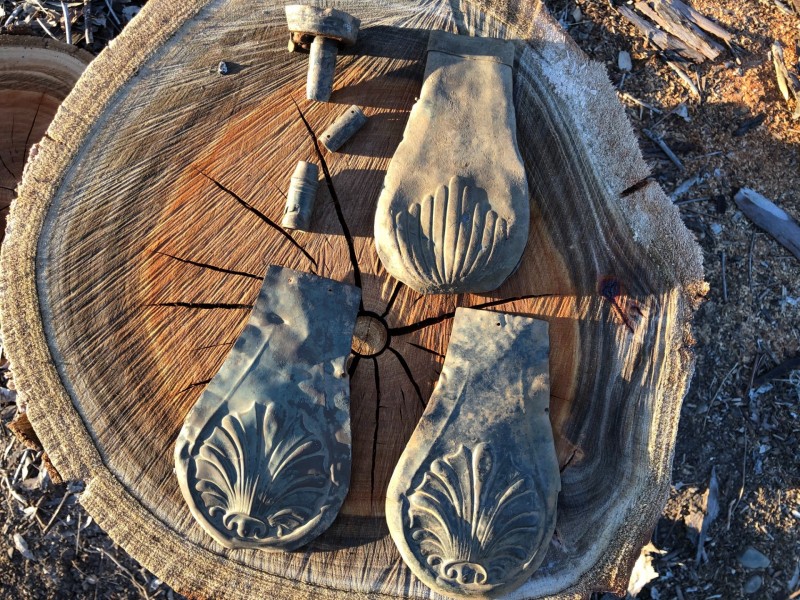
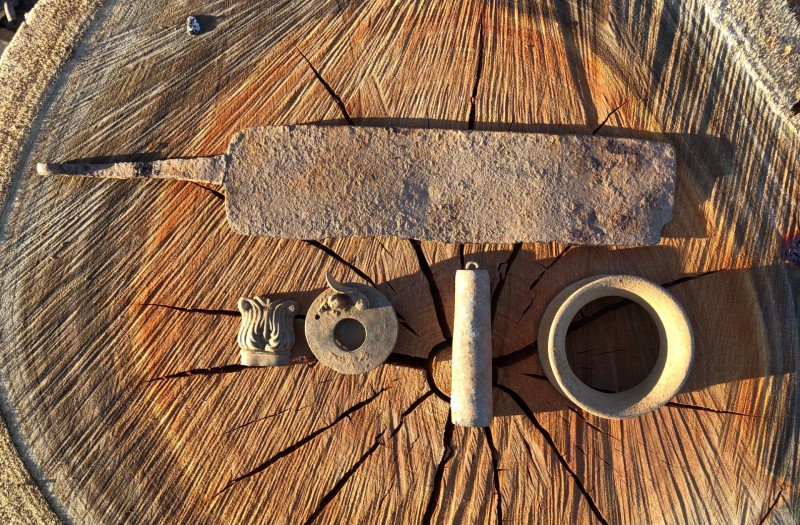
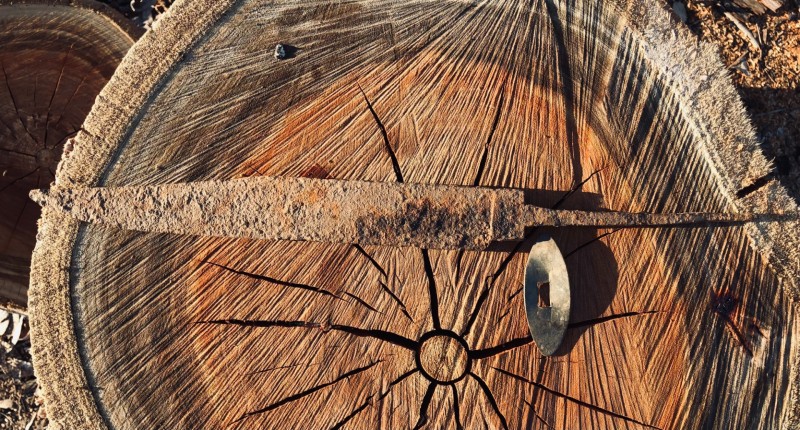
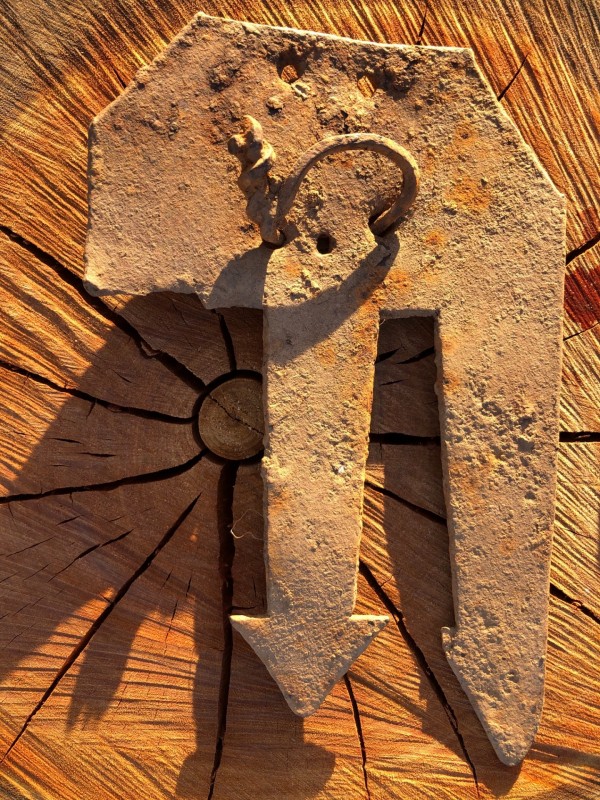
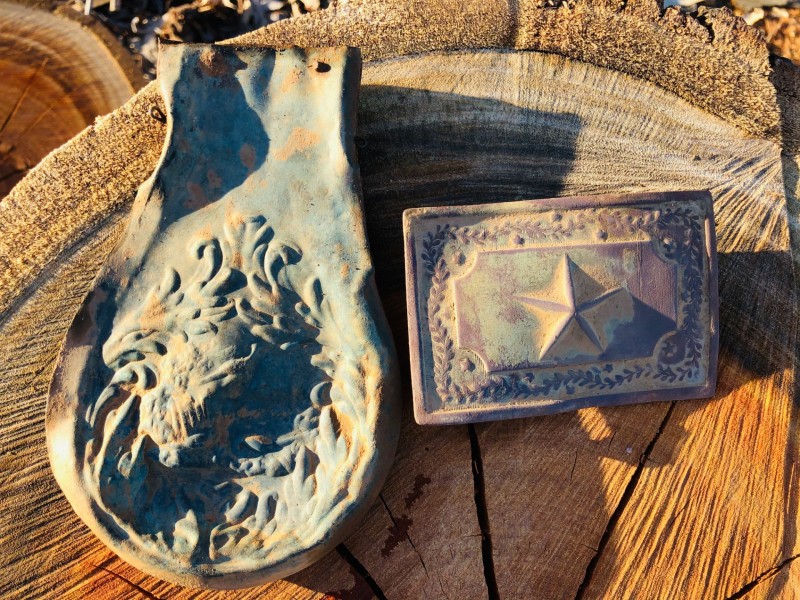
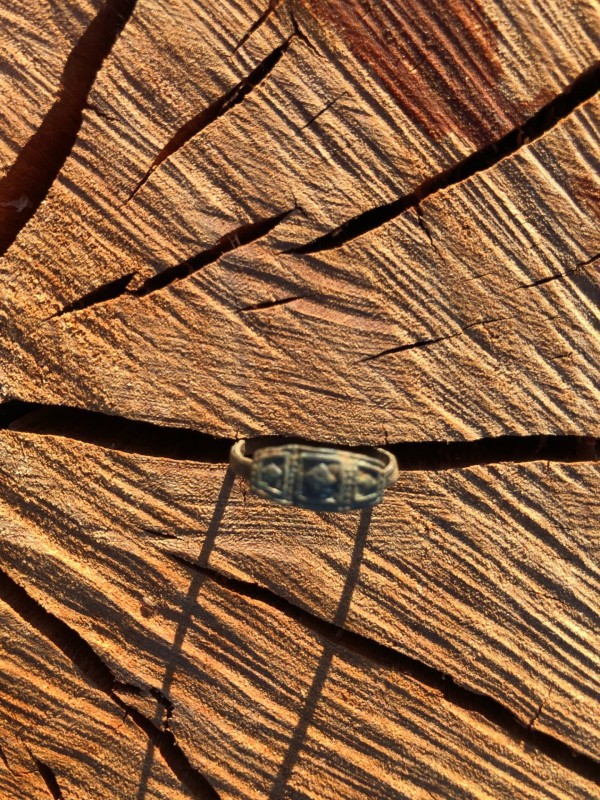
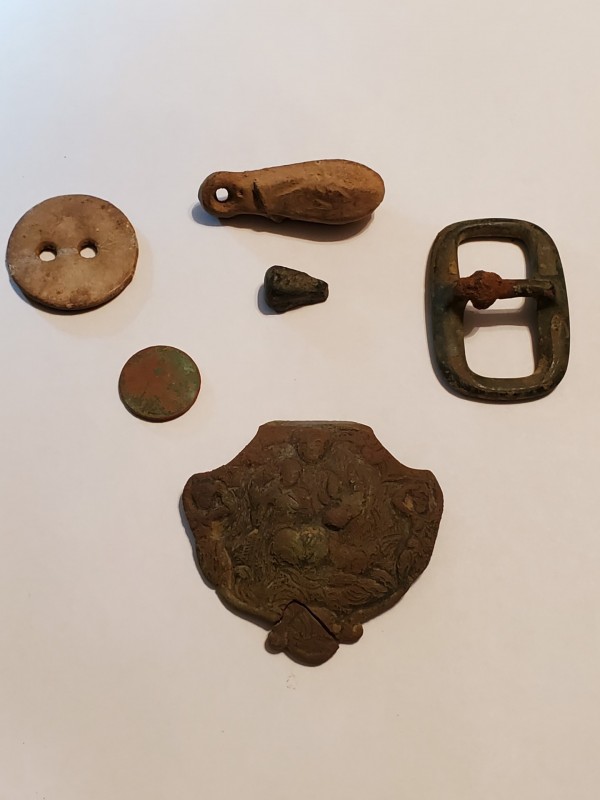
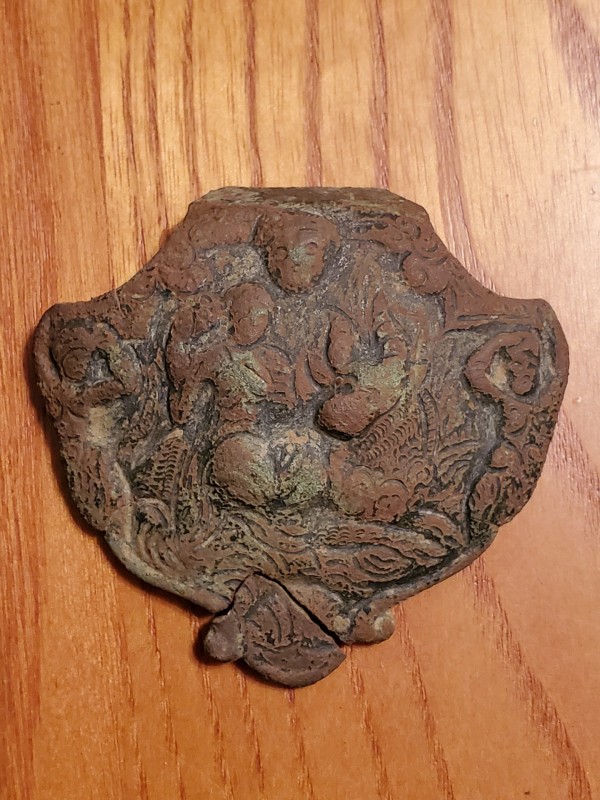
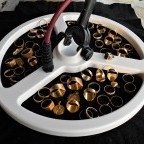

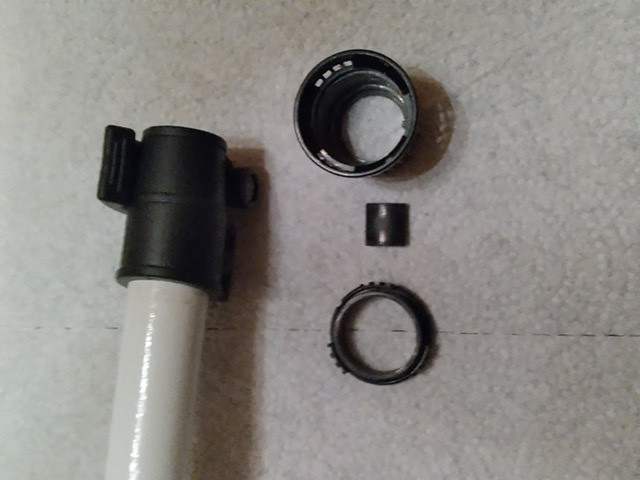

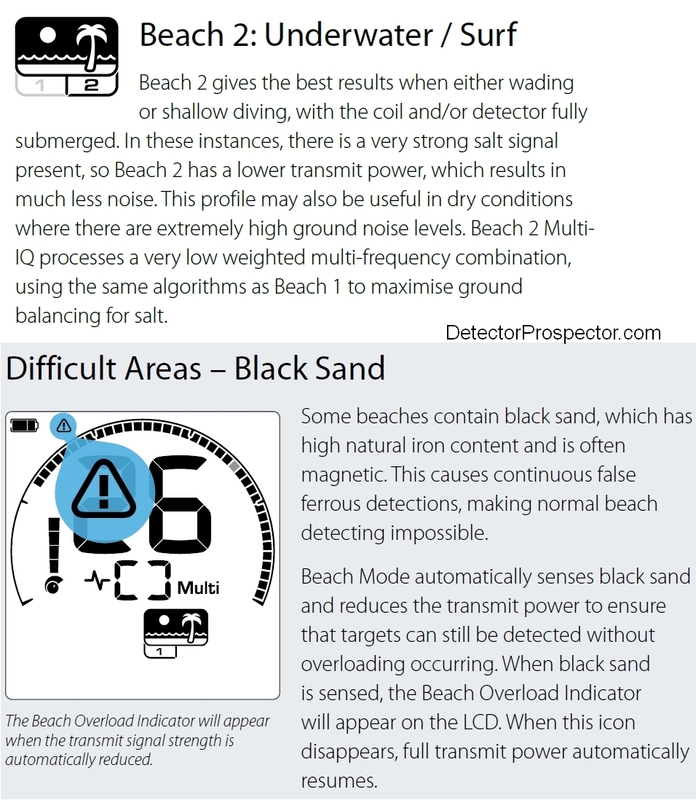

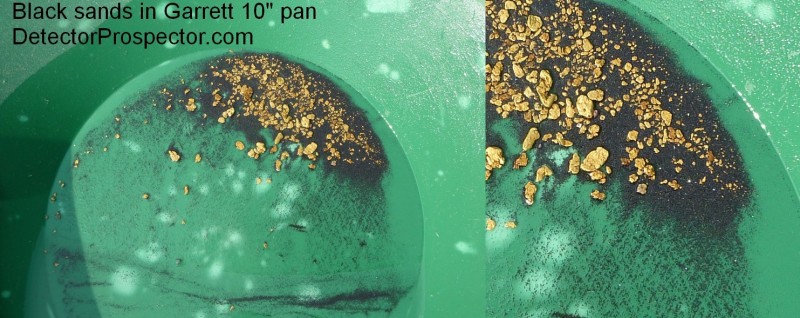

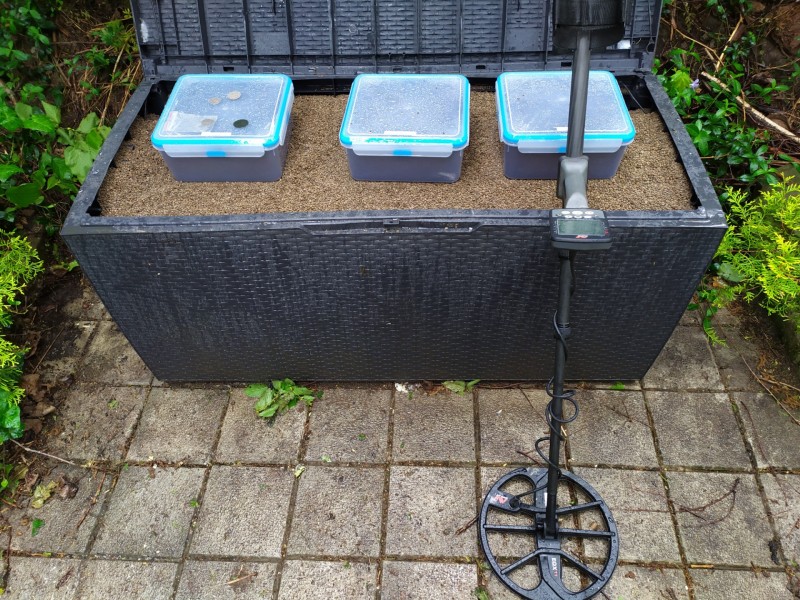
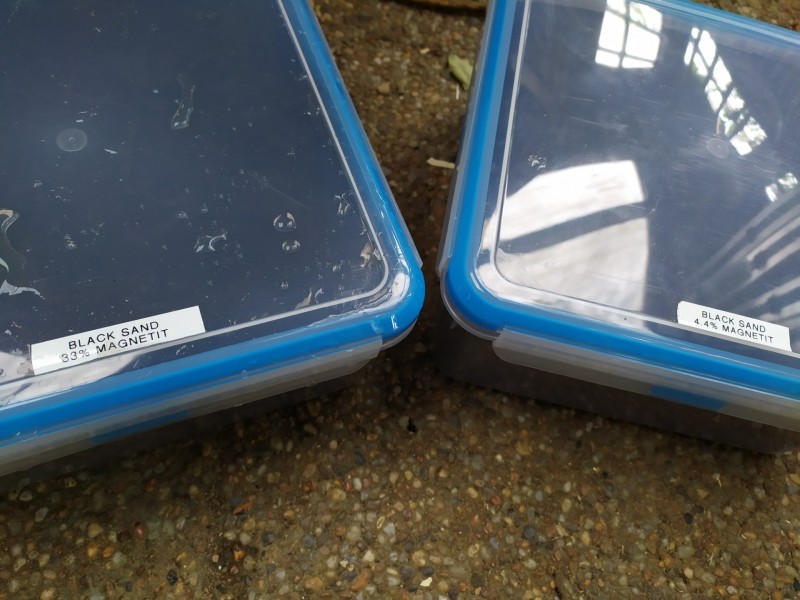


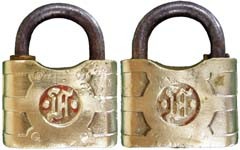

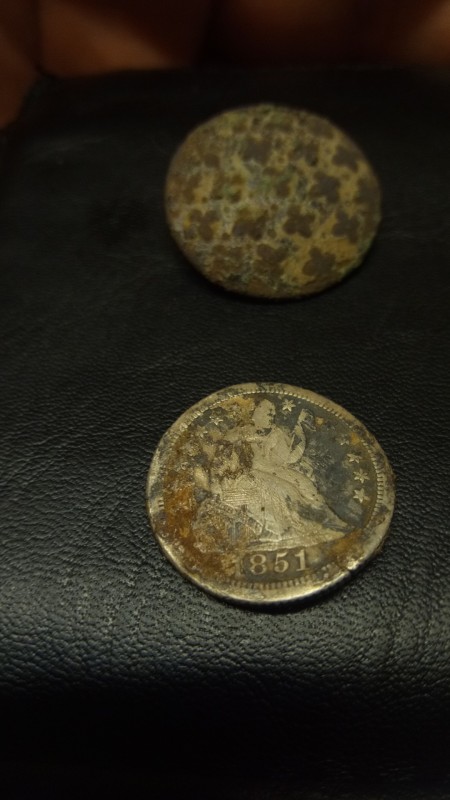
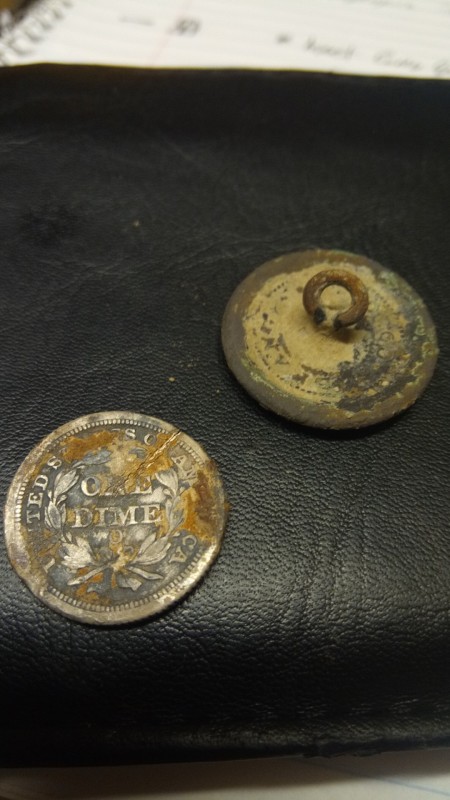

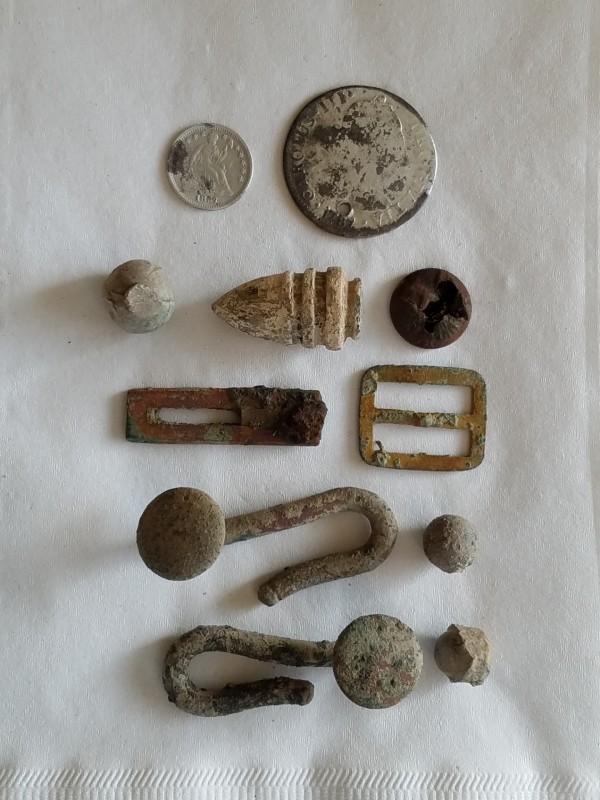
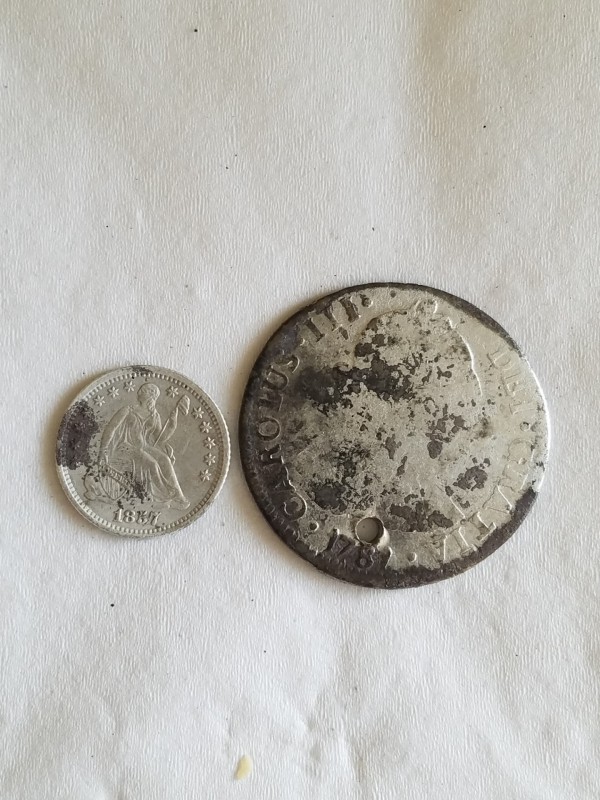
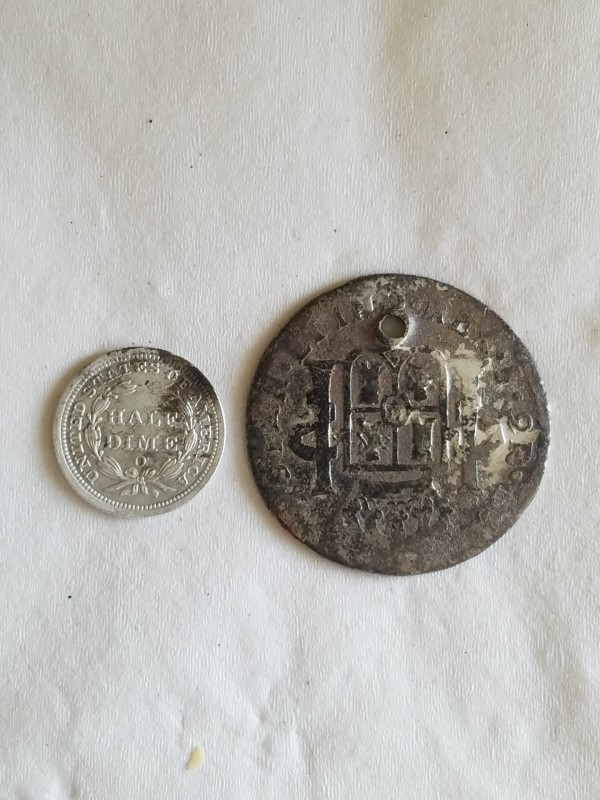


.thumb.jpg.95344db3aeef0a4c6c73420daa366191.jpg)

